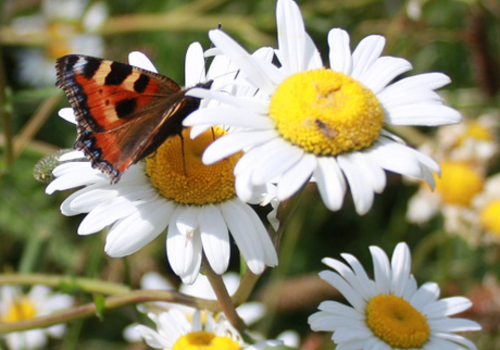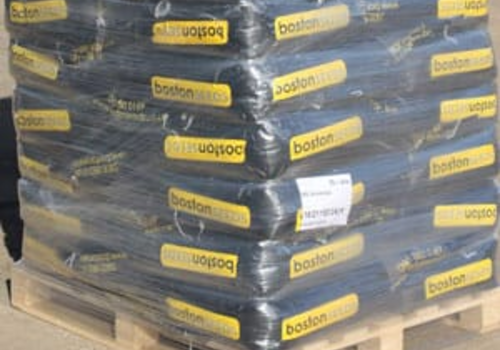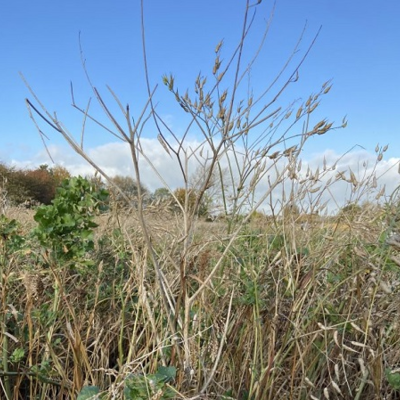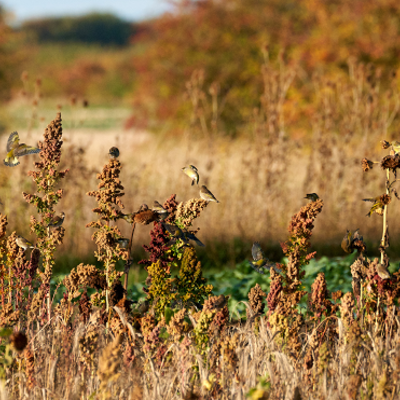AB9 - Wild Bird Food Seed Mixtures
Wild bird seed mixtures provide important food resources for birds throughout the year. All of our wild bird seed mixtures comply with Countryside Stewardship AB9 - Winter Bird Food. Buy online, apply for a trade account (we review all applications within one working day) or get in touch to place an order through your buying group. You can also request a catalogue to view our full range.

Boston Seeds are proud to supply the EnviroSeeds range for biodiversity and sustainable farming.
Use this 2 year mixture for CAHL2 (2024/2025) and AHL2 (2023) Sustainable Farming Incentive (SFI) and AB9 Countryside Stewardship (Winter Bird Food), providing grain-bearing plants for farmland birds, especially Grey Partridges, through autumn and winter for two seasons. Excellent feed and cover for game birds throughout the shooting season.
- Farmland birds eat the seeds from October and beneficial insects including bees and butterflies use the flowers during the summer
- Sow in spring or early summer for optimum establishment
- Re-sow every two years of your agreement
- Suitable for Sustainable Farming Incentive (SFI): CAHL2 AHL2
- Suitable for Countryside Stewardship (CSS): AB9
- Contains: 50% Spring Barley, 30% Spring Triticale, 7% White Millet, 5% Linseed, 5% Fodder Radish, 3% Kale
- Sowing rate: 40-50kg/ha. Pack size: 20kg

Boston Seeds are proud to supply the EnviroSeeds range for biodiversity and sustainable farming.
Use this 1 year mixture for CAHL2 (2024/2025) and AHL2 (2023) Sustainable Farming Incentive (SFI) and AB9 Countryside Stewardship (Winter Bird Food) to provide food and shelter for farmland birds, especially Finches and Corn Buntings, during autumn and winter.
- Farmland birds eat the seeds from October and beneficial insects including bees and butterflies use the flowers during the summer
- Sow in spring or early summer for optimum establishment
- Re-sow in each year of your agreement
- Suitable for Sustainable Farming Incentive (SFI): CAHL2 AHL2
- Suitable for Countryside Stewardship (CSS): AB9
- Contains: 50% Spring Barley, 30% Spring Triticale, 7% Sunflower, 5% Red Millet, 5% White Millet, 3% Quinoa
- Sowing rate: 50kg/ha. Pack size: 20kg
This item is currently unavailable
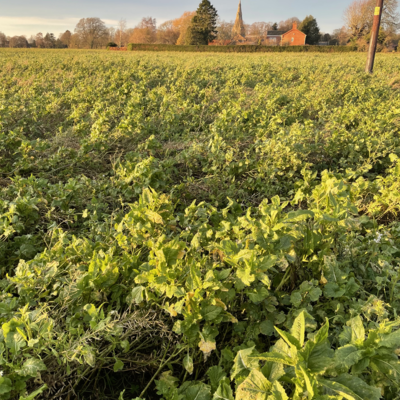

Boston Seeds are proud to supply the EnviroSeeds range for biodiversity and sustainable farming.
Use this mixture for CAHL2 (2024/2025) and AHL2 (2023) Sustainable Farming Incentive (SFI) and AB9 Countryside Stewardship (Winter Bird Food), to provide important food resources for farmland birds, during autumn and winter.
- Farmland birds eat the seeds from October and beneficial insects including bees and butterflies use the flowers during the summer
- Sow in spring or early summer for optimum establishment - suitable for later sowings and re-sowing of failed crops, where permitted
- Re-sow in each year of your agreement
- Suitable for Sustainable Farming Incentive (SFI): CAHL2 AHL2
- Suitable for Countryside Stewardship (CSS): AB9
- Contains: 35% Buckwheat, 30% Linseed, 15% White Mustard, 10% Oil Radish, 5% Brown Mustard, 5% Phacelia
- Sowing rate: 8-10kg/ha (added to c.40kg cereals) or 15-20kg/ha (as a standalone mix). Pack size: 20kg
This item is currently unavailable
We take our responsibility towards wildlife and conservation to heart, which is why we work with Farm Wildlife. Farm Wildlife is an umbrella of 11 separate wildlife charities and conservation organisations that have dedicated themselves to wildlife-friendly farming.
We have mixtures designed to cater to specific farmland birds dietary needs, especially during autumn and winter when food sources can become scarcer. For example, our CSS10/FCB wild bird mix provides a nutrient-rich option specifically catered to Finches and Corn Bunting.
Most of our mixtures are sown in spring for a one-year mixture, but our CSS10/GP mixture, which is especially nutritious for Grey Partridges, is available in one and two-year mixtures. These mixtures don’t just help benefit wild birds either as during the summer, when flowering, insects can use the flowers as a food source.
You can check out our full Countryside Stewardship range, including Nectar Flower Mixtures and Beetle Banks. All of the products in this range are designed to support our wildlife and encourage biodiversity - from supporting wildlife habitat restoration to minimising water pollution caused by agriculture.
We also have wildflower seeds which can help encourage biodiversity in smaller greenery projects.
Buy With Confidence

